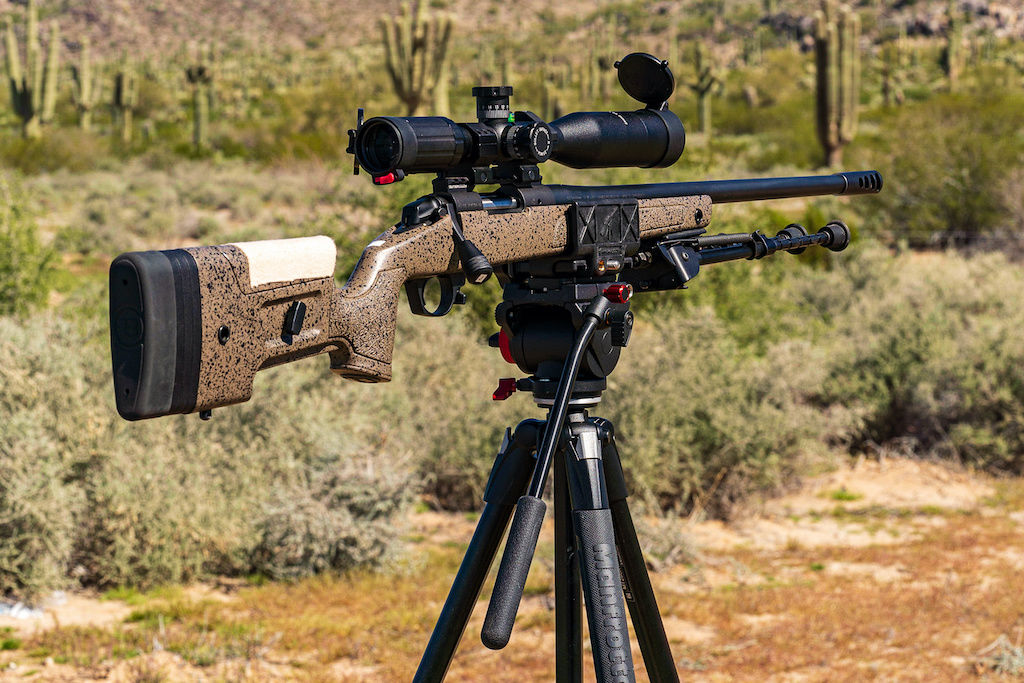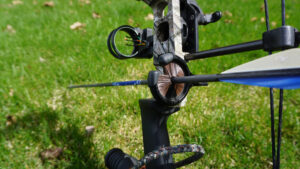Maine is widely known for its excellent fishing opportunities, and one of the most popular targets for anglers is the striped bass, commonly referred to as “stripers.” Whether you are a seasoned angler or a novice looking to try your hand at fishing, Maine offers some of the best striper fishing in the country. In this article, we will explore the ins and outs of striper fishing, the essential gear needed, the top locations in Maine, techniques for successful fishing, and the necessary regulations and licenses. Let’s dive in!
Understanding Striper Fishing
Before we delve into the specifics of striper fishing in Maine, it is essential to understand the basics. Striped bass are a highly sought-after game fish known for their powerful fights and delicious taste. They can grow to impressive sizes, with some individuals exceeding 50 pounds. Striper fishing requires skill, patience, and the right equipment. Let’s explore the fundamental aspects of striper fishing.
When targeting striped bass, it is crucial to understand their habits and behavior. Stripers are known for their migratory patterns, moving between freshwater and saltwater environments. They prefer cooler water temperatures and are often found near underwater structures such as rocks, ledges, and submerged debris. To increase your chances of success, it is crucial to study the tides, currents, and weather conditions.
One interesting fact about striped bass is that they are opportunistic feeders. They have a diverse diet that includes small fish, crustaceans, and even insects. This adaptability allows them to thrive in various environments and makes them an exciting species to target for anglers.
When it comes to striper fishing techniques, there are several popular methods. One common approach is trolling, where anglers use a boat to cover a large area while dragging lures or bait behind them. This method allows you to cover more ground and increase your chances of encountering a school of stripers.
Another popular technique is surfcasting, which involves fishing from the shoreline. This method requires careful observation of the water conditions and knowledge of the beach’s structure. Anglers often use long rods and heavy sinkers to cast their bait or lures far into the surf, where stripers are known to hunt for prey.
The Basics of Striper Fishing
When targeting striped bass, it is crucial to understand their habits and behavior. Stripers are known for their migratory patterns, moving between freshwater and saltwater environments. They prefer cooler water temperatures and are often found near underwater structures such as rocks, ledges, and submerged debris. To increase your chances of success, it is crucial to study the tides, currents, and weather conditions.
One interesting fact about striped bass is that they are opportunistic feeders. They have a diverse diet that includes small fish, crustaceans, and even insects. This adaptability allows them to thrive in various environments and makes them an exciting species to target for anglers.
When it comes to striper fishing techniques, there are several popular methods. One common approach is trolling, where anglers use a boat to cover a large area while dragging lures or bait behind them. This method allows you to cover more ground and increase your chances of encountering a school of stripers.
Another popular technique is surfcasting, which involves fishing from the shoreline. This method requires careful observation of the water conditions and knowledge of the beach’s structure. Anglers often use long rods and heavy sinkers to cast their bait or lures far into the surf, where stripers are known to hunt for prey.
Why Maine is Ideal for Striper Fishing
While striped bass can be found along the Atlantic coast, Maine offers some unique advantages for striper fishing. The state boasts a diverse range of habitats, including coastal areas, estuaries, and inland rivers that attract large schools of stripers. Additionally, Maine’s cold-water environment provides optimal conditions for stripers to grow to impressive sizes. Whether you prefer fishing from shore or a boat, Maine has something to offer for everyone.
Maine’s coastline stretches over 3,500 miles, providing ample opportunities for anglers to explore different fishing spots. From the rocky shores of Acadia National Park to the sandy beaches of Old Orchard Beach, there is a wide variety of environments to choose from. Each location offers its own unique challenges and rewards, making every fishing trip an adventure.
In addition to its diverse coastal areas, Maine is also home to numerous estuaries and rivers that serve as important feeding grounds for striped bass. These brackish waters provide a rich food source for stripers, attracting them in large numbers. Anglers who prefer freshwater fishing can explore the inland rivers and lakes, where stripers can be found during certain times of the year.
Aside from its abundant fishing opportunities, Maine’s natural beauty and wildlife add to the overall experience. While waiting for a bite, anglers can enjoy breathtaking views of rugged cliffs, picturesque lighthouses, and diverse marine life. From spotting seals and seabirds to witnessing majestic whales in the distance, striper fishing in Maine offers a chance to connect with nature on a deeper level.
Essential Gear for Striper Fishing
Now that we have covered the basics, let’s discuss the essential gear needed for striper fishing. The right equipment can significantly impact your success on the water. Here are some key items to consider:
Rods and Reels for Striper Fishing
When selecting a rod and reel for striper fishing, it is essential to choose equipment that can handle the size and power of these fish. Medium to heavy-action spinning or baitcasting rods paired with a sturdy reel are recommended. Opting for a reel with a high line capacity and a smooth drag system will help you effectively battle and land these powerful fish.
Moreover, it’s important to consider the length of the rod. Longer rods, typically around 7 to 9 feet, are ideal for casting long distances and providing better leverage when fighting a striper. On the other hand, shorter rods offer more control and are better suited for fishing in tight spaces or from a boat.
Additionally, the material of the rod should be taken into account. Graphite rods are lightweight and sensitive, making them a popular choice among striper anglers. Fiberglass rods, on the other hand, are more durable and can handle heavy loads, making them suitable for battling larger stripers.
Bait and Lures for Striper Fishing
Stripers are opportunistic feeders and will go after a variety of baits and lures. Depending on the conditions and location, you can use live bait such as sandworms, bunker, or eels. These natural baits can be fished on a variety of rigs, including fishfinder rigs, Carolina rigs, or simple bottom rigs.
When using live bait, it’s important to present it in a natural and enticing manner. This can be achieved by using a bait rig or a baitcasting reel with a bait clicker. The clicker emits a subtle noise that attracts stripers and alerts you to a potential bite.
Artificial lures such as topwater plugs, soft plastics, jigs, and swimbaits also work well when targeting stripers. Topwater plugs, like poppers or walking baits, create a commotion on the water’s surface, mimicking a wounded baitfish and enticing stripers to strike. Soft plastics, such as paddle tails or jerkbaits, can be rigged on a jighead or weighted swimbait hook to imitate a wounded baitfish or a swimming eel.
Experimenting with different bait and lure combinations can be the key to success. For example, using a combination of live bait and artificial lures can increase your chances of enticing a striper to bite. Additionally, varying the retrieve speed, depth, and color of your lures can help you figure out what the stripers are feeding on that particular day.
Remember, striper fishing is not just about the gear you use but also about understanding the behavior and patterns of these fish. Taking the time to research and learn about their feeding habits, migration patterns, and preferred habitats will greatly enhance your chances of landing a trophy striper.
Top Striper Fishing Locations in Maine
Now that you’re familiar with the gear, let’s explore some of the top striper fishing locations in Maine. Whether you prefer fishing in coastal areas or rivers, Maine has several hotspots that consistently produce striped bass.
Coastal Spots for Striper Fishing
Maine’s picturesque coastline offers numerous opportunities for striper fishing. Locations such as Wells Beach, Old Orchard Beach, and Scarborough Beach are known for their productive striper fisheries. These areas provide a mix of rocky shorelines, sandbars, and estuaries where stripers often gather in pursuit of prey.
River Locations for Striper Fishing
If you prefer river fishing, Maine has several mighty rivers that attract migrating stripers. The Kennebec River, Penobscot River, and Saco River are renowned for their striper populations. As the stripers follow the baitfish upstream, anglers can experience thrilling fishing action in these freshwater environments.
Techniques for Successful Striper Fishing
Now that you know where to find stripers in Maine, let’s explore some techniques for successful fishing.
Best Times for Striper Fishing
Stripers are known to be more active during low-light periods, such as dawn and dusk. Fishing during the early morning or late afternoon can often yield the best results. Additionally, certain tidal movements can trigger feeding frenzies, especially when baitfish are swept into turbulent currents.
Tips and Tricks for Catching Stripers
When targeting stripers, it is crucial to vary your bait presentation and retrieve speed. Stripers can be selective feeders, so experimenting with different techniques can make a significant difference. Pay attention to the behavior of seagulls and diving birds, as they often indicate the presence of feeding stripers. Lastly, maintaining stealth and avoiding excessive noise can prevent spooking these wary fish.
Regulations and Licenses for Striper Fishing in Maine
Before heading out to enjoy some striper fishing in Maine, it is essential to be familiar with the necessary regulations and licenses.
Understanding Fishing Regulations
Maine’s Department of Marine Resources sets regulations regarding striper fishing, including size limits, bag limits, and closed seasons. It is important to familiarize yourself with these regulations to ensure the sustainability of the fishery and avoid potential penalties.
How to Get a Fishing License in Maine
To legally fish for stripers and other species in Maine, you must obtain a valid fishing license. Licenses can be purchased online through the Maine Department of Inland Fisheries and Wildlife’s website or at authorized retailers. Make sure to review the license requirements and have your license with you while fishing.
With its abundance of striper fishing opportunities, beautiful landscapes, and rich fishing heritage, Maine is undoubtedly a top destination for anglers seeking an unforgettable fishing experience. Whether you are a local resident or visiting from out of state, exploring Maine’s striper fishing scene is an adventure worth pursuing. So grab your gear, study the tides, and get ready to discover the best striper fishing in Maine!


